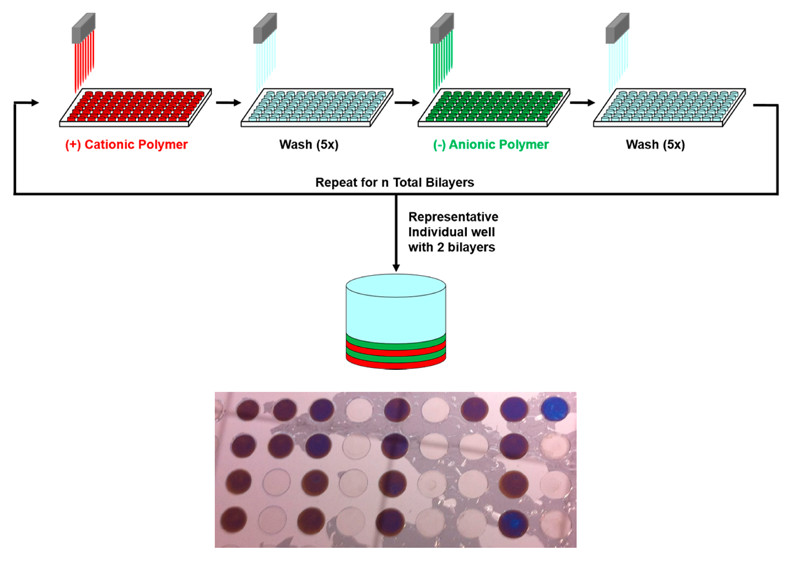A Jaklenec*, AC Anselmo*, J Hong, AJ Vegas, M Kozminsky, R Langer, PT Hammond, DG Anderson. “High throughput layer-by-layer films for extracting film forming parameters and modulating film interactions with cells.” ACS applied materials & interfaces 8.3 (2016): 2255-2261. *denotes equal contribution
Abstract: A high-throughput approach which automates the synthesis of polyelectrolyte-based layer-by-layer films (HT-LbL) to facilitate rapid film generation, systematic film characterization, and rational investigations into their interactions with cells is described. Key parameters, such as polyelectrolyte adsorption time and polyelectrolyte deposition pH, were used to modulate LbL film growth to create LbL films of distinct thicknesses using the widely utilized polyelectrolytes poly(allylamine hydrochloride) (PAH) and poly(acrylic acid) (PAA). We highlight how HT-LbL can be used to rapidly characterize film-forming parameters and robustly create linearly growing films of various molecular architectures. Film thickness and growth rates of HT-LbL films were shown to increase as a function of adsorption time. Subsequently, we investigated the role that polyelectrolyte solution pH (ranging from 2.5 to 9) has in forming molecularly distinct films of weak polyelectrolytes and report the effect this has on modulating cell attachment and spreading. Films synthesized at PAA-pH of 5.5 and PAH-pH 2.5–5.5 exhibited the highest cellular attachment. These results indicate that HT-LbL is a robust method that can shift the paradigm regarding the use of LbL in biomedical applications as it provides a rapid method to synthesize, characterize, and screen the interactions between molecularly distinct LbL films and cells.

